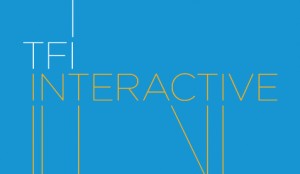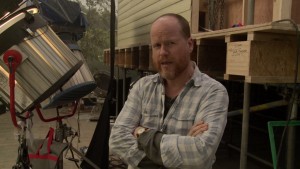 At the Tribeca Film Festival’s Storyscapes, Games for Change, and Tribeca Interactive Day, mediamakers were deluged with insights about interactivity and storytelling.
At the Tribeca Film Festival’s Storyscapes, Games for Change, and Tribeca Interactive Day, mediamakers were deluged with insights about interactivity and storytelling.
Panelists echoed each other on key concepts, in what speakers widely agreed was a sometimes-painful but steady transition to distributed, collaborative, and often immersive storytelling.
At the same time, these insights were not necessarily illustrated by media works showcased at Tribeca, not surprisingly at this highly experimental moment in the transition. As well, and also unsurprisingly, many media products were not scaleable, were wildly expensive, or both.
Takeaways
- Your audience is your collaborator. Embrace them, study them, welcome their feedback, build with and on their creativity. As remix, fanfic, vids, and memes show us, creativity is wildly social and people want to participate in the creative process.
- Research your users, and never stop. Find out as much as you can upfront about potential participants in your media work (which won’t be as hard as you might think, because the Internet’s business model is all about spying on users). Then keep learning about them as they begin to use your work, and adapt, serve, network. Tools like harv.is (still in development) are going to help.
- Tools don’t build relationships, people do. Your tools can facilitate building relationships, but they can’t do that work for you. Kickstarter campaigns die when media makers max out friends and family and can’t extend networks. The Yes Men’s Action Switchboard can’t do your organizing for you (even though it can help). Beta can help you code more easily, but you have to figure out the connections that you want to make. You can make cool things with Symplerand so can your networks, but only if people want to make something.
- Build community with media, not media with community. You’re trying to build connections, conversation through storytelling. Immersion in longform storytelling can get you there, but get there. And the more user participation possibilities you have in the experience, the more opportunities there are to connect.
- Powerful stories build powerful communities. Tell stories well with technology that’s easy for people to use, and let them tell stories too.
Interactive Media
 While this vision (also evident at SXSW panels) was exhilarating, especially to people attending the purely interactive events, it wasn’t often reflected in storytelling work showcased at Tribeca. Even the social-issue documentary films mostly arrived at the festival without a working plan for user engagement, and producers were largely looking for traditional distribution.
While this vision (also evident at SXSW panels) was exhilarating, especially to people attending the purely interactive events, it wasn’t often reflected in storytelling work showcased at Tribeca. Even the social-issue documentary films mostly arrived at the festival without a working plan for user engagement, and producers were largely looking for traditional distribution.
An unusual example of innovative distribution was Joss Whedon’s “In Your Eyes,” released digitally simultaneously with Tribeca screening for rental on Vimeo on Demand. Although Ondi Timoner enthusiastically trumpeted the gospel of sharing and networking, celebrated her YouTube series on disruptive innovation in filmmaking, and her short film “Amanda F—ing Palmer on the Rocks” documents the musical artist’s Kickstarter campaign to launch a direct-to-users distribution model, Timoner was also exploring traditional distribution models for the film. “The old gatekeepers haven’t gone away,” she said in a session after Palmer won a Tribeca Disruptive Innovation Award.
Storyscapes’ featured interactive documentaries all shared the quality of immersion in a virtual experience, often compellingly. But they were also typically interactive in a very limited sense, with little or no opportunity for ongoing interaction. They each had enormous virtues, but rarely those heralded by interactive advocates.
Immersion
“Circa 1948,” the National Film Board of Canada’s entry in a project led by its interactive doc producer Loc Dao, impressively constructed two virtual environments. Spookily (and appropriately—you’re visiting ghosts), one could walk around and listen to stories in a small physical space on which one of the two was projected onto the walls. The environments feature 45 objects with which users can interact to compose for themselves a portrait of a moment in the history of Vancouver, just before the destruction of a multi-ethnic neighborhood and classic hotel for dubious progress. Outside the Tribeca hothouse, the experience is available on iPads or iPhones only, and it helps if you have gamer skills to navigate the platform. “We’re creating a storyworld with recombinant narratives,” said Dana Dansereau. It took three years, he said, of pushing beyond the limits of current technology, to create credible, immersive, detailed, historically accurate environments accessible without wearable technology like Oculus Rift.
The winning project of Storyscapes, Clouds, features recombinant mini-interviews with tech experts on the process of making interactive work, located within a 3-D environment accessible without glasses. Most users seemed baffled by most of the content, although the tech-savvy seemed delighted with a plethora of in-jokes. User interaction was constrained to clicking on one of a few (or two) cross-hatches, to have a randomly selected speaker appear.
Users could, with other projects, use a piano to trigger audio (accompanying photos) of various New Yorkers singing the relevant notes, and experience the terror of persecution by border police with help from Oculus Rift glasses. They could also attend an often-hilarious performance by Nathan Penlington and a filmmaking team, combining polling technologies, video segments, and stand-up comedy, to “choose” their own documentary. This had the feeling of a live performance of a well-produced podcast.
The projects variously showcased interesting, if sometimes clumsy and sometimes balky, technologies to enhance experience. None of them built user contributions into ongoing creation, one of the core takeaways of speakers.
Games and apps
 Games for Change showcased work that often was constructed entirely around user input, but did not necessarily have compelling or immersive storytelling or a design to allow user creativity in ongoing development. For instance, “Mission US: A Cheyenne Odyssey,” provides a way to enter a Cheyenne perspective on westward expansion, but character development and plot are both thin. That said, Dartmouth’s Mary Flanagan showed with fascinating data how even very stripped-down gaming can increase empathy.
Games for Change showcased work that often was constructed entirely around user input, but did not necessarily have compelling or immersive storytelling or a design to allow user creativity in ongoing development. For instance, “Mission US: A Cheyenne Odyssey,” provides a way to enter a Cheyenne perspective on westward expansion, but character development and plot are both thin. That said, Dartmouth’s Mary Flanagan showed with fascinating data how even very stripped-down gaming can increase empathy.
Apps similarly often had great utility or potential, but we are still poised on the edge of seeing how story viably combines with interactivity. PromiseTracker is just the tool that parents told the makers of the signally important film American Promise they wanted, something to help keep their young boys on an academic track with better study habits; it’s not, however a storytelling medium and doesn’t intend to be. Rather, it’s a related product to the compelling story. The winners of Tribeca Hacks were an enterprising group of makers who figured out how to use wearable technology (watch, phone) to access geolocated stories (think your museum earphone experience set loose on the world). It’s an idea that, like many things at the bleeding edge of reality, is just waiting to be filled with some compelling reason to use it. Cinemacity magically links real places in Paris with film clips and film narratives shot there, but it’s only for Paris.
We may still be figuring out how to make storytelling a powerful tool for social change in a user-centric world. As experiential designer Tom Igoe said, only partly tongue in cheek and in reference to one project, “We’re still just waving at the machines.” But pooling the talent trying to figure it out has to be a good thing. They certainly got a lot of good advice.
Thanks to @kenyatta, @onditimoner, @benrito, @tigoe, @theyesmen, @criticalplay, @beyondbroadcast, @errolking, @twendywendy, @fancynancynyc, @fromthehip, @NonnyDLP, @OpeOluOla, @PatDoftheNFB, @danadansereau, @bgstokes and more.
